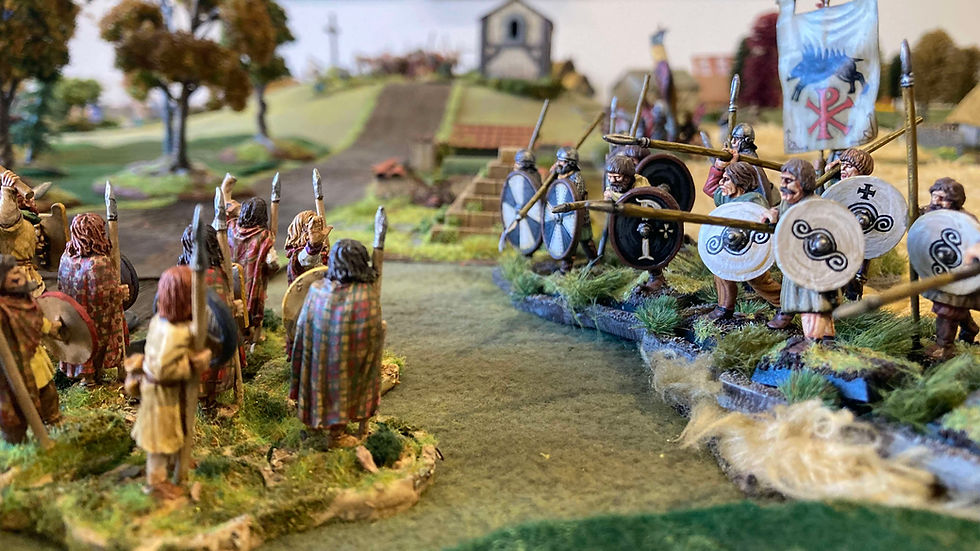Alala!
- Simon MacDowall
- Oct 12, 2022
- 2 min read
I have been working on some new simple rules for Hoplite battles which I call Alala! — from the ancient Greek war cry. I will use these for the Society of Ancients Matinea Battle Day and will also showcase them at the Society Conference in Cambridge 28-30 October.

The idea behind the rules is to get your hoplite phalanxes ordered and psychologically ready before signalling the advance to close with the enemy. Once the phalanxes begin to move in on each other there is little scope for tactical finesse or complex manoeuvre. Light troops and cavalry play a subordinate role — harassing and annoying the enemy and driving off enemy skirmishers. The rules as they currently stand after a first play test are in the Rules section of my website.

We ran a generic Theban vs Spartan test game yesterday with Pete O’Toole’s 1/72nd scale plastics supplemented by the 20 mil Newline Designs cavalry and peltasts I have been painting recently (see Forward back to the past).

The Thebans were able to ‘hire’ most of the available skirmishers and cavalry, leaving the Spartans with more hoplites but with precious little flank protection. The Spartans chose to deploy their small number of cavalry and psiloi all on their left flank, leaving their right open. Their hoplite battle line was considerably longer than the Theban line due to having more hoplites and also because the Thebans deployed a deep phalanx on their right.

As the phalanxes were ordering and psyching themselves up, the skirmish battle developed much as might be expected. The Thebans drove back the cavalry and psiloi on the Spartan left while the Theban cavalry on the other flank began to envelop the Spartan allied hoplites. Without a screen the Spartan hoplites began to take casualties from missiles.

The Spartan allies on the right advanced first, moving fast to close with the Theban hoplites before the enemy cavalry could encircle them. The clash was brutal, resulting in an allied Spartan unit being forced to retire. The Thebans pursued, their cavalry harassing the retiring enemy.

Then the Spartan left wing advanced. The veteran Spartiates held the deep Theban phalanx to a standstill despite the fact that they had suffered casualties from the enemy skirmishers. The other Laconians, urged on by the Spartan commander fighting in the front rank, forced the Arcadian Eparitoi to retire.

So with the pub calling us we ended the game there. The Spartan right was in trouble as was the Theban right. Had we continued further it was quite likely that the Theban right might have collapsed but their advantage in cavalry and light infantry would have made it difficult, or even impossible, for the Spartans to exploit. The more numerous hoplites on the Spartan right made it unlikely that it would collapse but it would have been surrounded by Theban cavalry with little they could do about it.
The rules were fun and worked well. I look forward to presenting them at the Society of Ancients Conference in a few weeks time.



Hi Simon
I've just received a copy of the Alala! rules.
Can you advise how you choose opposing army sizes and components? Is there a points system that you use?
Thanks
Robin - robineaux@gmail.com
Thoroughly enjoyed the game, Simon, thank you for getting it organised, looking forward to being involved with the game at the Conference.